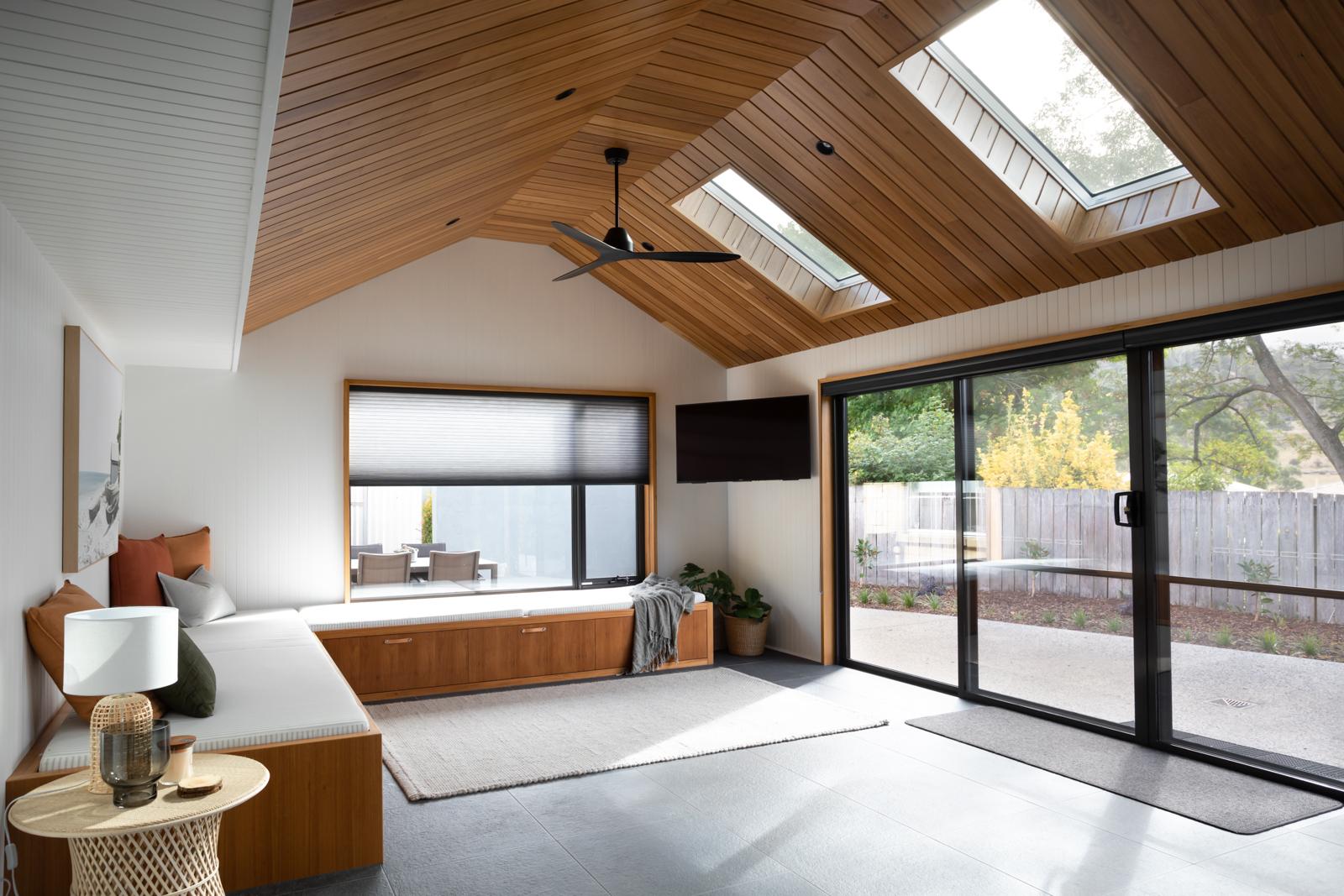Understanding standard ceiling heights in home construction
- Building

When building a new home or planning a renovation, one of the key decisions you’ll need to make is the ceiling height. This often-overlooked aspect of home design can have a huge impact on the overall feel and functionality of your space. At Barwick Developments, we understand that selecting the right ceiling height is an important consideration. In this blog, we’ll explore the standard ceiling heights commonly found in Australian homes, how they can influence your living experience, and how Barwick Developments can help you choose the perfect ceiling height for your new build or renovation.

What Are Standard Ceiling Heights?
Ceiling height refers to the distance from the floor to the ceiling, and this can vary depending on the type of house, the room's function, and personal preferences. Here’s a breakdown of the common ceiling heights in Australian residential builds:
- Standard Ceiling Height: The most common ceiling height in Australian homes is 2.4 metres. This ceiling height is typically used in bedrooms, living areas, hallways, and most other rooms. It offers a practical and comfortable space while maintaining a traditional feel in your home.
- Higher Ceiling Heights: In more modern homes, higher ceilings are becoming increasingly popular. Heights of 2.7 metres and 3 metres are commonly used in larger areas like living rooms, kitchens, and master bedrooms. These higher ceilings create a more open and airy atmosphere, enhancing the aesthetic of your home.
- Vaulted or Cathedral Ceilings: For those looking to make a statement, vaulted or cathedral ceilings are an option. These ceilings are typically found in areas like entryways or large living spaces and can reach heights of 3 metres or more at the peak. They offer a dramatic, spacious effect and are great for creating a sense of grandeur.
Why Ceiling Height Matters
Ceiling height isn’t just about looks; it can affect several practical aspects of your home, from energy efficiency to room functionality. Here’s how ceiling height plays a role in your home:
- Visual Impact and Room Size: Ceiling height has a major effect on the perceived size of a room. Higher ceilings tend to make rooms feel more open and expansive, which is great for living areas or spaces you want to feel grand. Lower ceilings, on the other hand, can make rooms feel cosy and intimate, perfect for bedrooms or smaller spaces.
- Energy Efficiency: Higher ceilings can sometimes make it more difficult to maintain a comfortable temperature in a room, as there’s more air volume to heat or cool. If energy efficiency is a concern, it's worth considering the trade-off between the aesthetic appeal of higher ceilings and the additional energy required to maintain the right temperature. Barwick Developments can assist in balancing both comfort and efficiency by using modern insulation and climate control solutions.
- Acoustics: Ceiling height also affects how sound behaves within a room. Rooms with higher ceilings may experience more echo or reverberation, which could impact the acoustics, especially in larger spaces like living rooms or home theatres. If acoustics are important to you, it’s something to consider when selecting ceiling height.
- Natural Light and Airflow: Higher ceilings often allow for larger windows, which can bring in more natural light and improve airflow throughout your home. This can help reduce reliance on artificial lighting and air conditioning, contributing to a more comfortable and energy-efficient living space.
- Aesthetic Appeal: Ceiling height plays a big role in the overall style of your home. High ceilings are often associated with luxury and spaciousness, while lower ceilings create a more intimate and practical environment. Whether you prefer a traditional, cosy home or a more modern and open design, the right ceiling height can enhance the atmosphere of any room.

What’s Right for Your Home?
When deciding on ceiling heights for your home, it’s important to consider your personal preferences, the style of your home, and how you’ll use each room. Here are a few factors to keep in mind when choosing the ceiling height that’s best for you:
- Room Function: Different rooms may benefit from different ceiling heights. For example, you might want higher ceilings in your living and dining areas for a more open and airy feel, while standard ceilings could be more appropriate for bedrooms or bathrooms where intimacy and comfort are key.
- Budget: While higher ceilings can enhance the overall look and feel of your home, they can also increase construction costs. Higher ceilings may require more materials, and they could also impact heating and cooling costs. Barwick Developments can help you make informed choices that work within your budget.
- Energy Efficiency: If keeping energy costs low is important, you may want to consider the impact of ceiling height on your home’s energy use. Larger spaces with higher ceilings can lead to more energy being used to heat or cool the room, so balancing style and energy efficiency is essential. We can help ensure your home is as energy-efficient as possible, regardless of ceiling height.
How Barwick Developments Can Help
At Barwick Developments, we’re committed to helping you design and build a home that suits your needs and preferences. If you’re unsure about the ideal ceiling height for your new home or renovation, we can offer advice and guidance to help you make the right decision. Whether you’re after the traditional feel of 2.4 metre ceilings or the spaciousness of 2.7 metres or more, we can help you incorporate the ceiling heights that will best suit your space, style, and lifestyle.
Conclusion
Ceiling height plays a crucial role in shaping the look, feel, and functionality of your home. Whether you prefer the traditional standard height of 2.4 metres or want to go for the grand look of 2.7 metres or higher, the right ceiling height can make a huge difference. At Barwick Developments, we can help you choose the ceiling height that best suits your design preferences, budget, and practical needs.





